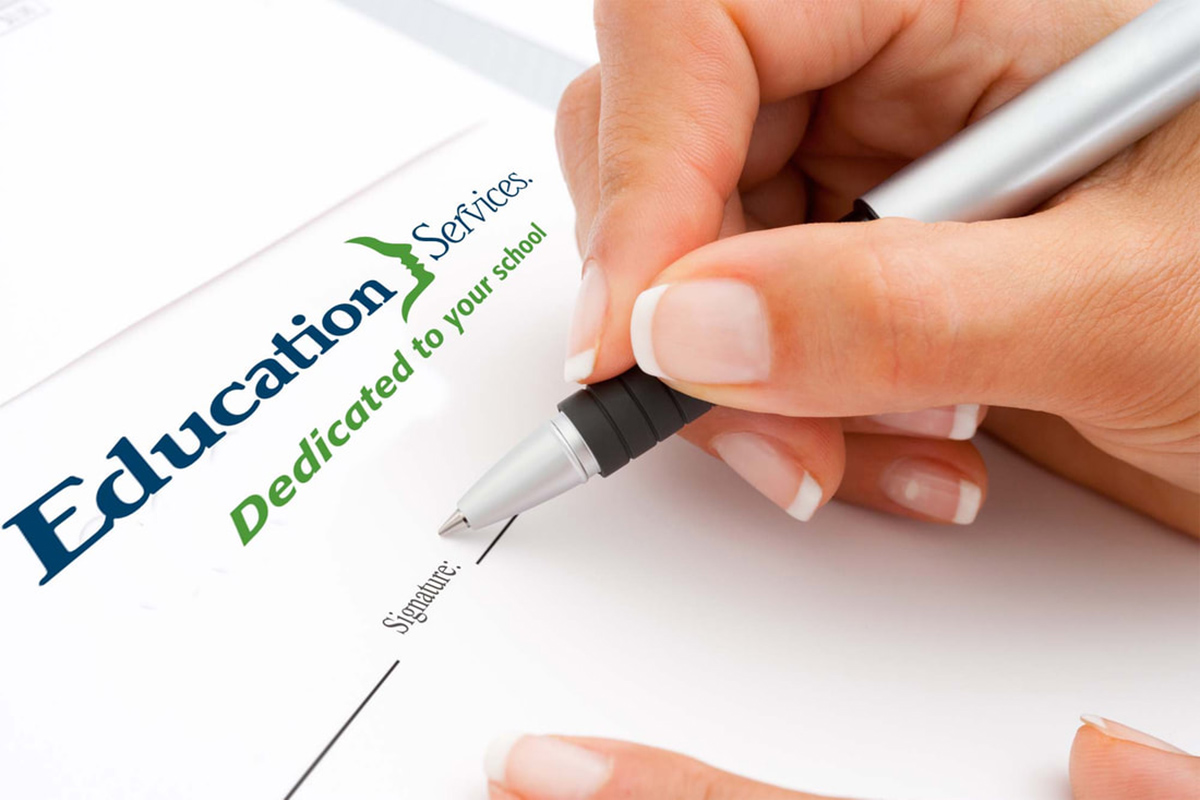Home>Finance>Why Should Financial Education Be Taught In Schools?


Finance
Why Should Financial Education Be Taught In Schools?
Modified: January 5, 2024
Discover the importance of teaching finance in schools. Explore why financial education is essential for students to become financially literate and secure their future
(Many of the links in this article redirect to a specific reviewed product. Your purchase of these products through affiliate links helps to generate commission for LiveWell, at no extra cost. Learn more)
Table of Contents
- Introduction
- Importance of Financial Education
- Empowering Students with Financial Knowledge
- Developing Responsible Financial Habits
- Navigating Real-World Financial Challenges
- Bridging the Wealth Gap
- Building a More Financially Informed Society
- Integrating Financial Education into School Curriculum
- Challenges and Solutions in Implementing Financial Education
- Conclusion
Introduction
In today’s complex and ever-changing financial landscape, it is becoming increasingly important for individuals to possess a strong foundation of financial knowledge. This is especially crucial for young people as they transition into adulthood and face important financial decisions. Unfortunately, traditional school curricula often fail to adequately address this critical life skill.
Financial education refers to the process of equipping individuals with the knowledge and skills needed to make informed financial decisions. It covers a wide range of topics such as budgeting, saving, investing, credit management, and understanding financial products. By providing students with a solid understanding of personal finance, we can empower them to navigate the complexities of the financial world and make sound decisions that will shape their future.
Teaching financial education in schools is an essential step towards building a financially literate society. It offers numerous benefits that go beyond just understanding the basics of money management. By incorporating financial education into the school curriculum, we can equip students with the skills and mindset necessary to face financial challenges and seize opportunities in the real world.
In this article, we will explore the importance of financial education and why it should be taught in schools. We will delve into the ways in which financial education can empower students, develop responsible financial habits, and bridge the wealth gap. We will also discuss the benefits of building a more financially informed society and the challenges and solutions associated with integrating financial education into the school system.
Join us on this journey to discover why financial education is crucial for the success and well-being of future generations. Together, we can pave the way for a financially empowered society.
Importance of Financial Education
Financial education plays a vital role in equipping individuals with the knowledge and skills needed to make informed financial decisions. Here are some compelling reasons why financial education is of utmost importance:
- Financial Empowerment: A solid understanding of personal finance empowers individuals to take control of their financial well-being. It enables them to make informed choices about saving, investing, and spending, leading to better financial outcomes in the long run. Financial education provides individuals with the tools they need to achieve their financial goals and secure their future.
- Responsible Financial Habits: By teaching financial education in schools, we can instill responsible financial habits from an early age. Students learn about the importance of budgeting, saving, and avoiding debt. They understand how to prioritize their financial goals and make wise spending decisions. By developing these habits early on, students are more likely to maintain them as adults, leading to financial stability and security.
- Navigating Real-World Financial Challenges: Financial education prepares individuals to navigate the complex financial challenges they will face in adulthood. It teaches them how to manage credit responsibly, understand mortgage options, and make informed decisions about insurance and investments. By equipping students with this knowledge, they can avoid common financial pitfalls and make sound choices that set them up for long-term success.
- Bridging the Wealth Gap: Financial education has the potential to bridge the wealth gap by equipping individuals from all socioeconomic backgrounds with the necessary financial skills. By ensuring that everyone has access to financial education, we can empower individuals to overcome financial barriers and work towards achieving financial security. This can contribute to reducing income inequality and promoting economic mobility.
- Building a More Financially Informed Society: A society that is well-versed in personal finance is more likely to make informed financial decisions, which can have far-reaching benefits. When individuals understand financial concepts and products, they are less vulnerable to scams and predatory financial practices. Additionally, a financially informed society is better equipped to contribute to economic growth, stability, and overall well-being.
As we can see, financial education is essential for individuals at all stages of life. By incorporating financial education into the school curriculum, we can empower students with the knowledge and skills they need to thrive in the real world. In the next section, we will explore the ways in which financial education can empower students and help shape their financial future.
Empowering Students with Financial Knowledge
Financial education is a powerful tool that empowers students with the knowledge and skills necessary to make informed financial decisions throughout their lives. Here are some ways in which financial education can empower students:
- Understanding personal finance: Financial education provides students with a comprehensive understanding of personal finance concepts such as budgeting, saving, investing, and managing debt. This knowledge equips students with the tools to effectively manage their money, set financial goals, and make informed decisions about income, expenses, and investments.
- Developing critical thinking skills: Financial education encourages students to analyze and evaluate financial information. They learn to assess the risks and rewards associated with financial decisions, understanding the importance of conducting thorough research and seeking professional advice when necessary. These critical thinking skills are essential for confident decision-making in the complex financial landscape.
- Building confidence: By learning about personal finance, students gain confidence in managing their finances. They develop a sense of control over their financial future and become less susceptible to financial stress and anxiety. This confidence extends beyond their personal finances and can positively impact other areas of their lives, fostering a sense of empowerment and self-assurance.
- Preparing for financial independence: Financial education prepares students for the transition to adulthood and the responsibilities that come with it. They learn about concepts such as banking, credit, taxes, and insurance, which are crucial for navigating the adult financial landscape. By starting early, students are better equipped to handle financial challenges and make sound decisions with confidence.
- Encouraging lifelong learning: Financial education instills a curiosity and desire for lifelong learning in students. As they learn about personal finance, they become more aware of the evolving financial landscape and the need to stay informed. This fosters a mindset of continuous learning, ensuring that students are adaptable and equipped to deal with the financial challenges and opportunities that may arise in the future.
By empowering students with financial knowledge, we equip them with valuable skills that will serve them throughout their lives. Financial literacy enables students to make informed decisions from an early age, setting them on a path to financial success and security. In the next section, we will explore how financial education helps students develop responsible financial habits.
Developing Responsible Financial Habits
One of the key objectives of financial education is to help students develop responsible financial habits that will guide their financial decision-making throughout their lives. Here are some ways in which financial education helps in developing such habits:
- Budgeting and goal setting: Financial education teaches students the importance of budgeting and setting financial goals. They learn how to create a budget that aligns with their income, track their expenses, and allocate their money towards their priorities. By developing these habits early on, students learn to manage their finances effectively and avoid unnecessary debt.
- Saving and investing: Students learn the importance of saving and investing for both short-term and long-term goals. Financial education equips them with the knowledge to make informed decisions about different saving and investment options. They understand concepts such as compound interest, risk, and diversification, enabling them to make smarter decisions that can help grow their wealth over time.
- Responsible borrowing: Financial education teaches students about the different types of credit and when it is appropriate to borrow. They learn about interest rates, repayment terms, and the potential consequences of excessive debt. By understanding these concepts, students can make responsible borrowing decisions and avoid falling into a cycle of debt.
- Understanding financial products: Financial education provides students with knowledge about various financial products such as banking services, credit cards, insurance, and investments. They learn the benefits and risks associated with these products, enabling them to make informed decisions when using them. This understanding protects students from falling prey to scams or engaging in risky financial behavior.
- Practicing delayed gratification: Financial education encourages students to understand the concept of delayed gratification. They learn that making short-term sacrifices can lead to long-term financial stability and success. By valuing responsible financial habits, students develop discipline and patience, allowing them to resist impulsive spending and make choices that support their long-term financial goals.
Through financial education, students develop a strong foundation of responsible financial habits that will guide their financial decision-making throughout their lives. These habits not only promote financial stability and security but also lay the groundwork for building wealth and achieving financial goals. In the next section, we will discuss how financial education helps students navigate real-world financial challenges.
Navigating Real-World Financial Challenges
The real world presents individuals with a myriad of financial challenges, ranging from managing debt to making sound investment decisions. Financial education equips students with the knowledge and skills to navigate these challenges successfully. Here are some ways in which financial education helps students navigate real-world financial challenges:
- Credit management: Financial education teaches students about the importance of maintaining a good credit score and managing credit responsibly. They learn how credit works, how to establish credit, and how to use credit wisely. Armed with this knowledge, students can make informed decisions about borrowing, avoiding excessive debt, and managing credit cards effectively.
- Understanding investments: Financial education introduces students to the world of investing and helps them understand the different investment options available. They learn about stocks, bonds, mutual funds, and other investment vehicles. This knowledge allows students to make informed decisions about investing their money and potentially growing their wealth over time.
- Insurance and risk management: Students learn about the importance of insurance and different types of coverage, such as health insurance, auto insurance, and homeowner’s insurance. They understand the role insurance plays in managing financial risks and protecting themselves and their assets. By understanding insurance options, students can make informed decisions about the type and amount of coverage they need.
- Consumer protection: Financial education teaches students about their rights and responsibilities as consumers. They learn about consumer protection laws, the importance of reading contracts and agreements, and how to identify and report scams and fraudulent activities. This knowledge empowers students to make informed purchasing decisions and protects them from becoming victims of financial fraud.
- Taxation: Financial education introduces students to the basics of taxation and helps them understand their rights and responsibilities as taxpayers. They learn about different types of taxes, deductions, and credits. This knowledge allows students to make informed decisions regarding their finances and ensures compliance with tax laws.
By equipping students with financial education, we empower them to navigate the real-world financial challenges they will encounter as adults. Whether it’s managing credit, making investment decisions, protecting themselves as consumers, or understanding taxation, students gain the knowledge and skills necessary to make informed choices and overcome financial hurdles. In the next section, we will discuss how financial education can help bridge the wealth gap and promote a more financially inclusive society.
Bridging the Wealth Gap
The wealth gap refers to the unequal distribution of wealth and income among individuals or groups within a society. Financial education has the potential to bridge this gap by equipping individuals from all socioeconomic backgrounds with the necessary financial knowledge and skills. Here’s how financial education can help bridge the wealth gap:
- Equal access to financial knowledge: By incorporating financial education into the school curriculum, we ensure that every student has access to essential financial knowledge. This helps level the playing field and ensures that individuals from all backgrounds have the opportunity to gain the skills needed to make informed financial decisions. It empowers individuals to break the cycle of generational poverty and work towards achieving financial security.
- Building confidence and empowerment: Financial education not only provides knowledge but also instills confidence and empowerment in individuals. When individuals feel confident in their financial knowledge and skills, they are more likely to take control of their financial well-being and make informed choices. This empowerment can help individuals overcome financial barriers and strive towards building wealth.
- Fostering entrepreneurship: Financial education can inspire and encourage entrepreneurship, especially among individuals from disadvantaged backgrounds. By teaching the basics of starting and running a business, individuals are empowered to pursue entrepreneurial ventures and create opportunities for wealth creation in their communities. This can help bridge the wealth gap by promoting economic growth and job creation.
- Promoting responsible financial behavior: Financial education teaches individuals how to manage their money responsibly, avoid excessive debt, and make informed financial decisions. By equipping individuals with these skills, we can reduce the financial struggles that often perpetuate the wealth gap. Individuals will be better equipped to save, invest, and build wealth, leading to a more financially inclusive society.
- Access to financial resources: Financial education helps individuals understand and access financial resources that can bridge the wealth gap. They learn about banking services, affordable credit options, and government programs aimed at promoting financial inclusion. By understanding these resources, individuals can make informed decisions and take advantage of opportunities that can help them build wealth.
By providing financial education to individuals from all backgrounds, we can bridge the wealth gap and create a more financially inclusive society. Empowering individuals with the knowledge and skills to make informed financial decisions sets the stage for equal opportunities and financial success regardless of one’s socioeconomic background. In the next section, we will explore how integrating financial education into the school curriculum can contribute to building a more financially informed society.
Building a More Financially Informed Society
Financial education plays a crucial role in building a more financially informed society. When individuals possess a solid understanding of personal finance, they can make informed decisions, avoid financial pitfalls, and contribute to the overall well-being of the society. Here are some ways in which financial education helps in building a more financially informed society:
- Preventing financial crises: A financially informed society is less vulnerable to financial crises. When individuals understand financial concepts and products, they are better equipped to make sound decisions and avoid risky financial behavior that can lead to economic downturns. Financial education promotes stability and resilience in the face of financial challenges.
- Protection against scams and fraud: Financial education arms individuals with the knowledge to identify and protect themselves against scams and fraudulent activities. They are less likely to fall victim to financial scams and are better equipped to safeguard their assets and financial well-being. This reduces financial stress and promotes trust within the society.
- Encouraging responsible financial behavior: Financial education promotes responsible financial behavior among individuals. They learn the importance of budgeting, saving, and investing wisely. By making responsible financial choices, individuals contribute to their own financial well-being and reduce the burden on social welfare systems. This, in turn, strengthens the overall financial health of the society.
- Informed consumer decision-making: A financially informed society is composed of individuals who make informed consumer decisions. They understand the fine print, compare prices, and consider the long-term implications of their purchases. This drives competition in the market, promotes transparency, and ensures that individuals make choices that align with their financial goals and values.
- Contribution to economic growth: Financially informed individuals are more likely to contribute to economic growth. They have the knowledge and skills to start businesses, invest in the economy, and make sound financial decisions. This fosters innovation, job creation, and overall prosperity, benefiting both individuals and the society as a whole.
By integrating financial education into the school curriculum and ensuring access to financial knowledge for all, we can build a more financially informed society. This helps individuals achieve financial well-being, protect themselves from financial risks, and contribute to the overall economic growth and stability of the society. In the next section, we will discuss the challenges and potential solutions in implementing financial education in schools.
Integrating Financial Education into School Curriculum
Integrating financial education into the school curriculum is essential for equipping students with the knowledge and skills they need to navigate the complexities of the financial world. Here are some key considerations and potential strategies for integrating financial education into the school curriculum:
- Starting early: Financial education should begin at an early age to establish a solid foundation of financial knowledge. By incorporating age-appropriate financial concepts into elementary school curricula, students can develop basic financial literacy skills that can be built upon in later years.
- Integration across subjects: Financial education can be integrated into various subjects, such as math, social studies, and even language arts. This interdisciplinary approach allows students to see the practical applications of financial concepts in different contexts and reinforces their understanding of personal finance.
- Engaging teaching methods: Utilizing interactive and engaging teaching methods can enhance the effectiveness of financial education. Hands-on activities, simulations, case studies, and real-life examples can make financial concepts more relatable and help students apply their knowledge in practical scenarios.
- Collaboration with financial institutions and experts: Collaborating with financial institutions, industry professionals, and community organizations can provide valuable resources and expertise in delivering financial education. Guest speakers, workshops, and partnerships can enhance the learning experience and expose students to real-world financial perspectives and career opportunities.
- Professional development for educators: Providing professional development opportunities for educators is crucial to ensure they have the knowledge and confidence to effectively teach financial education. Training programs, workshops, and resources can equip educators with the necessary tools to deliver engaging financial education lessons that cater to diverse learning styles.
- Monitoring and assessment: Regular monitoring and assessment of students’ financial knowledge and skills are important to gauge the effectiveness of financial education efforts. Implementing assessments and incorporating financial literacy objectives into existing evaluation frameworks can help track progress and make necessary adjustments to the curriculum.
Integrating financial education into the school curriculum may come with challenges such as limited resources, curriculum constraints, and resistance to change. However, with a strategic approach and collaboration between educators, policymakers, and relevant stakeholders, these challenges can be overcome. Prioritizing financial literacy as a core component of education will eventually lead to a generation of individuals with strong financial capabilities and a better understanding of personal finance.
In the next section, we will discuss some of the challenges associated with implementing financial education in schools and explore potential solutions.
Challenges and Solutions in Implementing Financial Education
Implementing financial education in schools can present various challenges, but with proper planning and collaboration, these challenges can be addressed effectively. Here are some common challenges and potential solutions:
- Limited Resources: Schools often face resource limitations, including time, budget, and qualified educators to teach financial education. To overcome this, schools can partner with community organizations, financial institutions, and experts who can provide additional resources and support. Online platforms and educational materials can also supplement classroom instruction, making financial education more accessible.
- Curriculum Constraints: Schools have a constrained curriculum with limited time for additional subjects. Financial education can be integrated across existing subjects, such as math or social studies, to ensure that it doesn’t compete with core subjects. Adapting existing curriculum frameworks to incorporate financial education concepts can help streamline the integration process.
- Teacher Training: Educators may lack the necessary expertise or confidence to teach financial education. Providing professional development opportunities, workshops, and training programs can equip educators with the knowledge and skills to effectively deliver financial education. Collaboration with financial experts and institutions can offer valuable insights and resources for teacher training.
- Resistance to Change: Implementing a new subject or curriculum can face resistance from administrators, educators, and even parents. Educating stakeholders about the benefits of financial education, leveraging research studies, and showcasing success stories from schools that have implemented financial education can help alleviate concerns and generate support.
- Age-Appropriate Curriculum: Designing a curriculum that caters to different age groups and developmental stages can be challenging. Developing age-appropriate activities, materials, and teaching strategies can ensure that financial education is engaging and relevant for students of all ages. Collaborating with experts in child and adolescent development can provide insights on effective approaches for different age groups.
- Evaluating Effectiveness: Measuring the effectiveness of financial education can be challenging. Schools can implement assessments, surveys, or pre and post-tests to gauge students’ knowledge and skills. These evaluations will help identify areas for improvement and ensure that the financial education curriculum is delivering the desired outcomes.
By addressing these challenges through collaboration, innovation, and effective communication, schools can successfully implement financial education and help students develop lifelong financial skills. It is important for policymakers, educators, parents, and the community to recognize the importance of financial education and work together to overcome these challenges.
In the next section, we will summarize the importance of financial education and its impact on individuals and society.
Conclusion
Financial education is essential for equipping individuals with the knowledge and skills they need to make informed financial decisions and navigate the complexities of the financial world. By integrating financial education into the school curriculum, we can empower students, develop responsible financial habits, bridge the wealth gap, and build a more financially informed society.
Financial education empowers students by providing them with a solid understanding of personal finance, developing critical thinking skills, and preparing them for financial independence. It helps students develop responsible financial habits such as budgeting, saving, and investing, setting them on a path to financial stability and success.
Moreover, financial education prepares students for real-world financial challenges by teaching credit management, investment strategies, risk management, consumer protection, and taxation. Through financial education, we can bridge the wealth gap by ensuring equal access to financial knowledge and empowering individuals from all backgrounds to work towards achieving financial security.
Building a more financially informed society has numerous benefits, including preventing financial crises, protecting individuals against scams and fraud, encouraging responsible financial behavior, and contributing to economic growth. By integrating financial education into the school curriculum and providing educators with the necessary training and resources, we can develop a generation of financially literate individuals who are equipped to make informed decisions and contribute to the well-being of the society.
While implementing financial education may come with challenges such as limited resources and curriculum constraints, these can be overcome through collaboration, innovative teaching methods, and support from community organizations and financial institutions. By addressing these challenges head-on, we can ensure that financial education becomes an integral part of every student’s educational journey.
In conclusion, financial education is not just a desirable addition to the school curriculum; it is a necessity for preparing students to thrive in an increasingly complex financial landscape. By equipping students with the knowledge and skills to make informed financial decisions, we can empower individuals, bridge the wealth gap, and build a financially informed society that benefits everyone.














